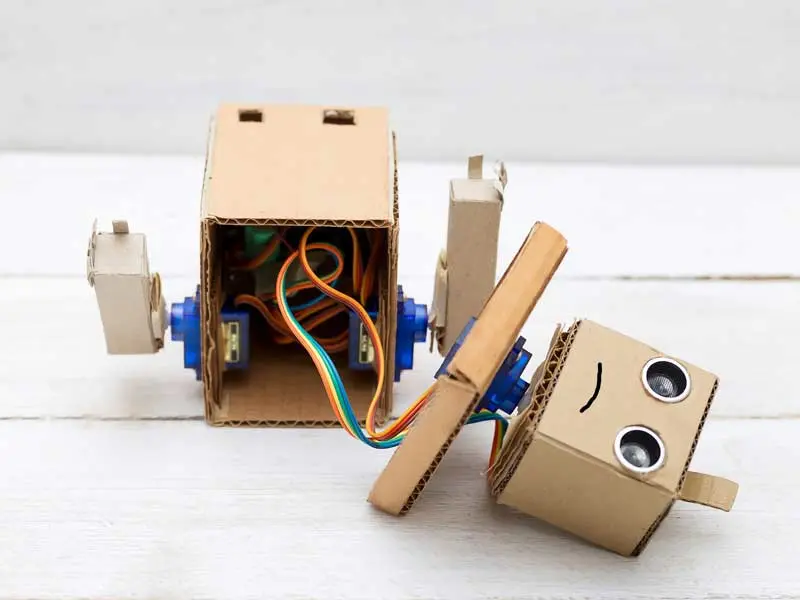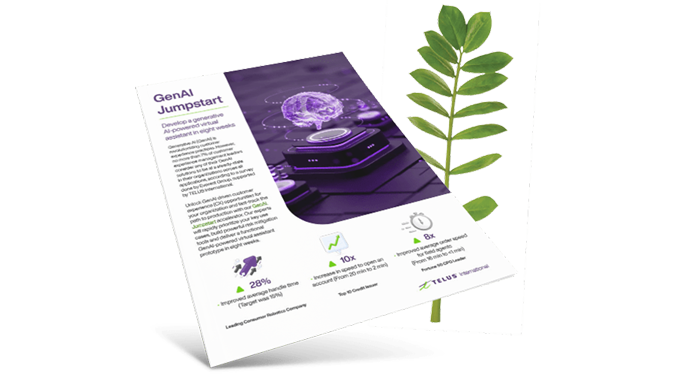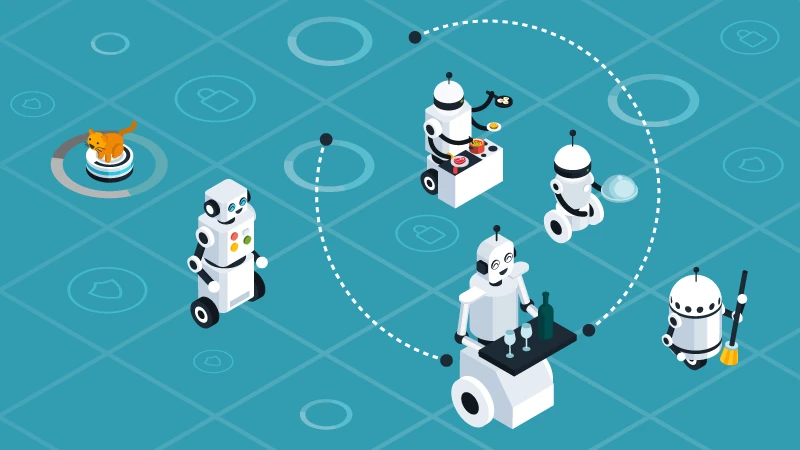- Insights
- Digital Experience
- Article
Why bots break (and how to build them so they don’t)

Robotic process automation (RPA) holds a lot of promise for making organizations more efficient — but only if they can first overcome a few persistent obstacles.
RPA is a time and money-saving solution that allows businesses to delegate repetitive tasks such as data entry and retrieval to computer programs, thereby freeing up human employees for more complex work. Due to the ever-increasing reliance upon data in business, RPA represents a huge opportunity to reduce spending, increase workforce productivity and streamline internal operations.
However,according to market-research firm McKinsey & Company, most attempts to integrate RPA over the last 10 years have failed. This is largely due to the overly simplistic “plug-and-play” approach that is all too often applied to bot rollouts.
Without defining clear goals or considering cultural impact, it’s unrealistic for companies to expect an automatic and sustained ROI from this evolving technology. But, if companies develop and implement smart long-term strategies and forward-looking safeguards, a bot breakdown can be avoided and the full potential of RPA can be realized.
Think big, start small
The first, and perhaps most important lesson regarding RPA, is that it must be executed with context in mind. Kirsten Jepson, director of product marketing at TELUS International, believes that organizations should see RPA as just one component of a larger plan to digitize, modernize and organize.
“From our clients’ perspective, the biggest challenge is making sure that there’s a corporate strategic initiative built around embracing technology and evolving the digital customer experience,” Jepson explains. “When you look at RPA as a one-off upgrade, that’s where you run into trouble.”
Part of a strategic approach is considering the impact of early implementation on other aspects of an organization. After all, no single process exists in a vacuum; a time-saving win for the finance department, for example, could lead to an unseen productivity nightmare for the customer service team.
Jepson believes that a thorough understanding of company processes is the key to a smooth rollout — but that requires self-reflection. “A lot of companies don’t have visibility into their processes, and won’t admit to that, but successful RPA depends on having well-defined processes and understanding how they impact one another. Solving for that Rubik’s cube effect is very important,” says Jepson.
In these cases, RPA engineers can partner with company stakeholders to determine what processes can be automated safely, and then develop architectural blueprints for implementation. For first-time RPA adopters, the solution should be conservatively designed to target a small bottleneck or pain point and then gradually expand once that automation is delivering results without disruption.
Consider culture
Another crucial element of an RPA rollout strategy is getting key players aligned. Company leaders should understand the benefits that the technology can have on their team’s productivity, speed and quality, especially when it comes to their customer experience delivery. “Every executive wants their company to be customer-first,” Jepson says. “So figure out what that really means to them, and how much they’re willing to invest in it.”
To make the most of the technology, a designated project champion should advocate for RPA implementation in a way that makes sense to the people in charge.
After leadership is on board, RPA champions should focus on unifying the rest of the organization. Keep in mind that not everyone will see change as a positive, especially when that change is automation. Data specialists may worry that RPA will impact their jobs. IT specialists may worry that misuse of RPA will negatively impact security and infrastructure, making their jobs more difficult. The solution here is communication.
“You’re bringing together different parts of the business in ways they haven’t been brought together before,” says Jepson. “In the recent past, IT has been a standalone entity. Marketing, too. Many different silos can exist, but now, they all need a seat at the same table in order to work together and have a say in how their processes are going to be affected.”
Agent training must also be prioritized as some automated processes can have a direct impact on the customer experience. Should things go wrong, there needs to be a response plan in place to minimize customer dissatisfaction and resume normal operations as soon as possible. Again, cultural sentiment towards new technology can sour quickly during the growing pains of implementation, so it’s important to stress the benefits.
Jepson notes that AI chatbots and other RPA innovations present customer care agents with an unprecedented opportunity to upscale. “As simpler processes are replaced over time, agents can spend less time on the more basic and repetitive parts of their jobs and morph into more sophisticated customer experience professionals.”
Furthermore, if contact center managers can reinvest the saved time and money into agent training, they have an opportunity to increase the skill level and versatility of the existing workforce. “Customer transactions are becoming more complex than ever before, so the agent of the future must be a universal agent,” Jepson posits. “They’ll juggle between SMS, tweets and live chat. They’ll have more technical expertise. There will be information available at their fingertips to enable them like never before, and ultimately, they’ll enrich the customer experience.”
Measure & iterate
RPA isn’t a “set it and forget it” solution. The program must be monitored, re-evaluated and improved at regular intervals. The first step is to use the right metrics to measure success:
- Speed: How long does an RPA-enhanced project take — from start to finish — compared to the previous method?
- Productivity: How long does it take a bot to complete a task compared to a human?
- Compliance: Are all regulations and protocols being followed?
- Quality: How many errors are reported with RPA?
By the three-month mark, project champions should formally pause, analyze performance and fine-tune their bots accordingly. As Jepson points out, however, the more complex an RPA setup becomes, the more attention and care it will require. “It’s important to be careful,” she warns. “It’s an agile process. It iterates. You can stop and measure, but you have to continuously circle back and re-assess as additional processes are layered on.”
Automation isn’t automatic
When it comes to RPA, there are no half-measures. Any organization expecting a quick-and-dirty solution from bot tech is taking a sizeable risk.
A successful rollout and long-term implementation requires tight planning and supervision, including a wide scope, cross-functional alignment and a framework for testing and learning. If these steps are taken, RPA adopters can see huge returns, along with a transformation in company culture and the way business gets done.



